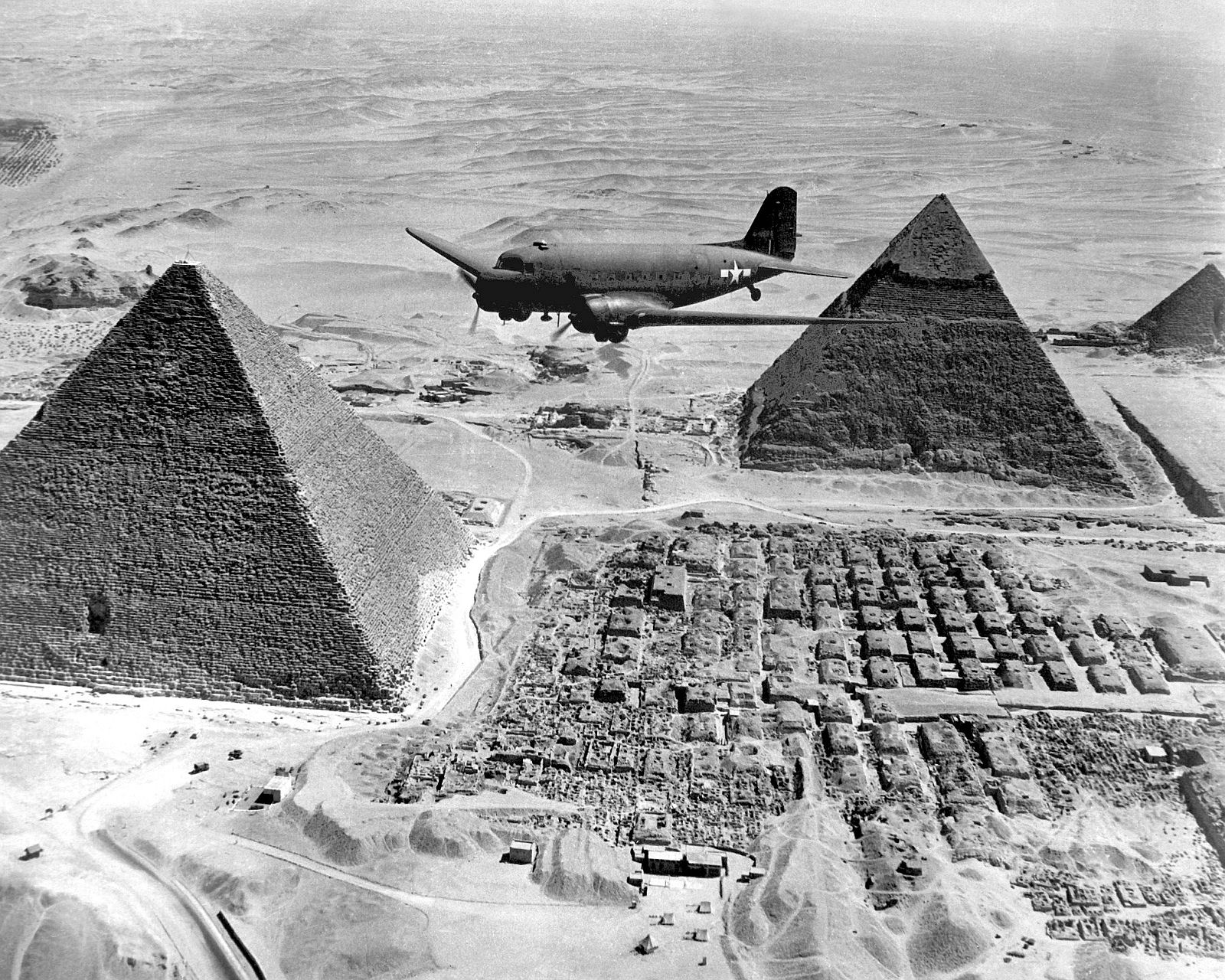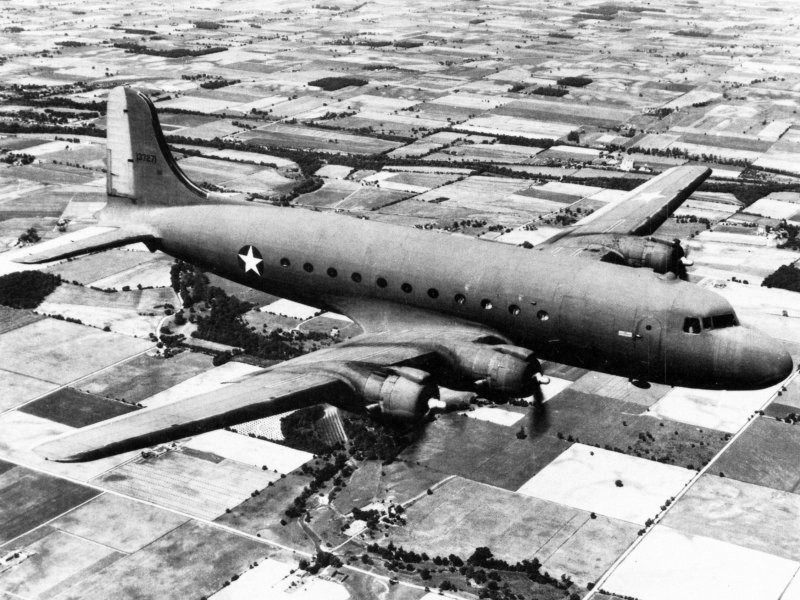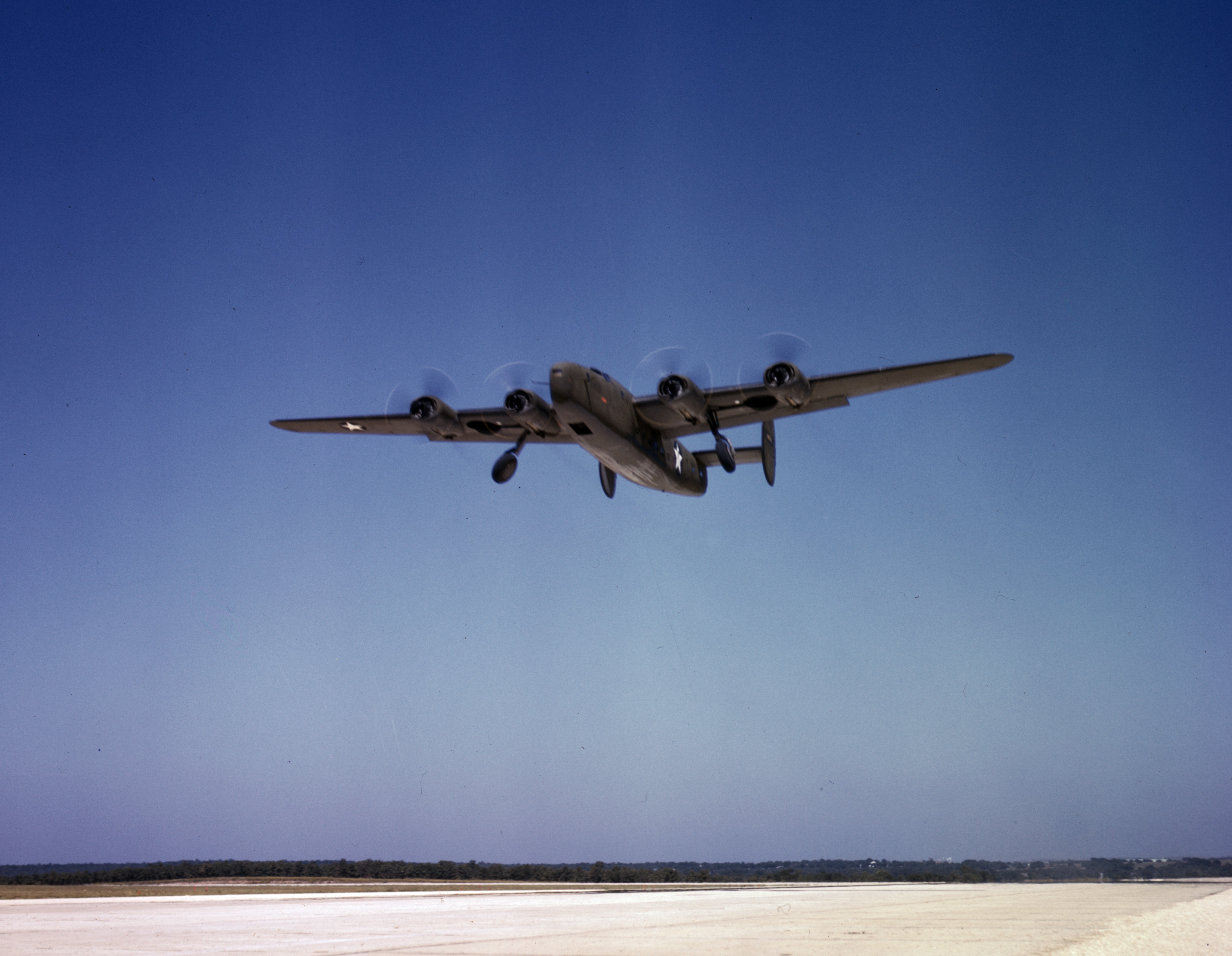|
1st Airlift Squadron
The 1st Airlift Squadron is part of the 89th Airlift Wing, 89th Operations Group, at Andrews Air Force Base, Maryland. It conducts transport of various high-level U.S. military and government officials. Mission Provides global Special Air Mission (SAM) airlift, logistics, aerial port and communications for the President, Vice President, Combat Commanders, senior leaders and the global mobility system as tasked by the White House, Chief of Staff of the Air Force, and Air Mobility Command. History World War II Established under Air Transport Command in 1944 to provide aerial transportation in China-Burma-India Theater from May 1944–May 1945 and in Western Pacific from c. September–December 1945. The unit was equipped first with the Curtiss C-46 Commando, and then converted to the Consolidated C-87 Liberator Express in 1944. Heavy airlift operations Re-established under Military Air Transport Service in November 1953, providing airlift of personnel and equipment in ... [...More Info...] [...Related Items...] OR: [Wikipedia] [Google] [Baidu] |
Air Mobility Command
Air Mobility Command (AMC) is a major command (MAJCOM) of the U.S. Air Force. It is headquartered at Scott Air Force Base, Illinois, east of St. Louis, Missouri. Air Mobility Command was established on 1 June 1992, and was formed from elements of the inactivated Military Airlift Command (MAC) and Strategic Air Command (SAC). AMC melded MAC's worldwide airlift system of primarily C-5 Galaxy, C-141 Starlifter (later replaced by C-17 Globemaster III beginning in 1995), and C-130 Hercules airlift aircraft with SAC's tanker force of KC-135 Stratotanker and KC-10 Extender aerial refueling aircraft, the latter air refueling aircraft having been freed from their strategic nuclear strike commitment to SAC's B-52 Stratofortress and B-1 Lancer bomber fleet by the end of the Cold War and the dissolution of the Soviet Union. Overview Air Mobility Command's mission is to provide global air mobility. The command also plays a crucial role in providing humanitarian support at home and arou ... [...More Info...] [...Related Items...] OR: [Wikipedia] [Google] [Baidu] |
Air Transport Command (United States Air Force)
Air Transport Command (ATC) was a United States Air Force unit that was created during World War II as the strategic airlift component of the United States Army Air Forces. It had two main missions, the first being the delivery of supplies and equipment between the United States and the overseas combat theaters; the second was the ferrying of aircraft from the manufacturing plants in the United States to where they were needed for training or for operational use in combat. ATC also operated a worldwide air transportation system for military personnel. Inactivated on 1 June 1948, Air Transport Command was the precursor to what became the Military Air Transport Service in 1948 and was redesignated Military Airlift Command (MAC) in 1966. It was consolidated with MAC in 1982, providing a continuous history of long range airlift through 1992 when the mission was transferred to today's Air Mobility Command. History By no means least among the achievements of the Army Air Forces ... [...More Info...] [...Related Items...] OR: [Wikipedia] [Google] [Baidu] |
Lockheed VC-140 JetStar
The Lockheed JetStar (company designations L-329 and L-1329; designated C-140 in US military service) is a business jet produced from the early 1960s to the 1970s. The JetStar was the first dedicated business jet to enter service, as well as the only such airplane built by Lockheed. It was also one of the largest aircraft in the class for many years, seating ten plus two crew. It is distinguishable from other small jets by its four engines, mounted on the rear of the fuselage, and the "slipper"-style fuel tanks fixed to the wings. Development The JetStar originated as a private project within Lockheed, with an eye to winning a United States Air Force (USAF) requirement that was later dropped due to budget cuts. Lockheed decided to continue the project on its own for the business market. The first two prototypes were equipped with two Bristol Siddeley Orpheus engines, the first of these flying on 4 September 1957. The second of these was also equipped with the wing-mounted ... [...More Info...] [...Related Items...] OR: [Wikipedia] [Google] [Baidu] |
Boeing VC-135 Stratolifter
The Boeing C-135 Stratolifter is a transport aircraft derived from the prototype Boeing 367-80 jet airliner (also the basis for the 707) in the early 1950s. It has a narrower fuselage and is shorter than the 707. Boeing gave the aircraft the internal designation of Model 717. Since the first one was built in August 1956, the C-135 and its variants have been a fixture of the United States Air Force. Origins and operational history In the early 1960s, the Military Air Transport Service operated a fleet consisting almost entirely of propeller-driven aircraft such as the piston-powered Douglas C-124 Globemaster II and C-133 Cargomaster turboprop.Davis and Willson 2019, p. 74. While capable of carrying large, outsized payloads, they were becoming increasingly obsolescent and lacked the global reach required of the rapidly-modernizing Air Force. In May 1960, Congress approved the purchase of 50 C-135 aircraft; it was selected in part because of its low development cost, being a st ... [...More Info...] [...Related Items...] OR: [Wikipedia] [Google] [Baidu] |
McDonnell Douglas VC-9 Skytrain II
The McDonnell Douglas C-9 was a military version of the McDonnell Douglas DC-9 airliner. It was produced as the C-9A Nightingale for the United States Air Force, and the C-9B Skytrain II for the U.S. Navy and Marine Corps. The final flight of the C-9A Nightingale was in September 2005, and the C-9C was retired in September 2011. The U.S. Navy retired its last C-9B in July 2014. The two remaining C-9s in Marine service were retired in April 2017. Despite being officially retired, one C-9B, BuNo 161529, was seen as late as November 2020 being operated by the U.S. Air Force as an experimental sensor testbed. Design and development In 1966, the U.S. Air Force identified a need for an aeromedical transport aircraft and ordered C-9A Nightingale aircraft the following year. Deliveries began in 1968.Gunston, Bill, ed. ''The Encyclopedia of World Air Power''. New York, NY: Crescent Books, 1986. . The U.S. Air Force received 21 C-9A aircraft from 1968 to 1969. The C-9As were used for ... [...More Info...] [...Related Items...] OR: [Wikipedia] [Google] [Baidu] |
Beechcraft C-12 Huron
The Beechcraft C-12 Huron is the military designation for a series of twin-engine turboprop aircraft based on the Beechcraft Super King Air and Beechcraft 1900. C-12 variants are used by the United States Air Force, United States Army, United States Navy and United States Marine Corps. These aircraft are used for various duties, including embassy support, medical evacuation, as well as passenger and light cargo transport. Some aircraft are modified with surveillance systems for various missions, including the Cefly Lancer, Beechcraft RC-12 Guardrail and Project Liberty programs. Design and development The first C-12A models entered service with the U.S. Army in 1974 and were used as a liaison and general personnel transport. The aircraft was essentially an "off-the-shelf" Super King Air 200, powered by the type's standard Pratt & Whitney Canada PT6A-41 engines. The U.S. Navy followed suit in 1979, ordering a version of the Super King Air A200C (modified with a 1.32 m by 1.32 m; ... [...More Info...] [...Related Items...] OR: [Wikipedia] [Google] [Baidu] |
Special Air Mission
The United States Air Force Special Air Mission provides air transportation for the president of the United States (POTUS), vice president of the United States (VPOTUS), first lady of the United States (FLOTUS), presidential Cabinet, U.S. congressional delegations (CODELs), and other high-ranking American and foreign dignitaries. The Special Air Mission is under the cognizance of the Air Mobility Command (AMC) and executed by the 89th Airlift Wing (89 AW) based at Andrews Air Force Base, Maryland. Mission The 89th Airlift Wing provides the U.S. government's flight service with 17 aircraft dedicated to the SAM and 15 helicopters supporting federal emergency requirements. They use civilian airports almost exclusively. SAM mission areas may be divided into the following categories: * Presidential Mission: A mission directed by the White House to transport the President of the United States or members of the First Family. * Special Air Mission: A mission operated by the 89th Airl ... [...More Info...] [...Related Items...] OR: [Wikipedia] [Google] [Baidu] |
Douglas C-133 Cargomaster
The Douglas C-133 Cargomaster is an American large turboprop cargo aircraft built between 1956 and 1961 by the Douglas Aircraft Company for use with the United States Air Force. The C-133 was the USAF's only production turboprop-powered strategic airlifter, entering service shortly after the Lockheed C-130 Hercules, which is designated a tactical airlifter. It provided airlift services in a wide range of applications, being replaced by the C-5 Galaxy in the early 1970s. Design and development The C-133 was designed to meet the requirements for the USAF's Logistic Carrier Support System SS402L for a new strategic transport. The aircraft differed considerably from the C-74 Globemaster and C-124 Globemaster IIs that had preceded it. A high-mounted wing, external blister fairings on each side for the landing gear, and rear-loading and side-loading doors ensured that access to, and the volume of, the large cargo compartment were not compromised by these structures. The cargo comp ... [...More Info...] [...Related Items...] OR: [Wikipedia] [Google] [Baidu] |
Douglas C-124 Globemaster II
The Douglas C-124 Globemaster II, nicknamed "Old Shaky", is an American heavy-lift cargo aircraft built by the Douglas Aircraft Company in Long Beach, California. The C-124 was the primary heavy-lift transport for United States Air Force (USAF) Military Air Transport Service (MATS) during the 1950s and early 1960s, until the Lockheed C-141 Starlifter entered service. It served in MATS, later Military Airlift Command (MAC), units of the Air Force Reserve and Air National Guard until retired in 1974. Design and development Douglas Aircraft developed the C-124 from 1947 to 1949, from a prototype they created from a World War II–design Douglas C-74 Globemaster, and based on lessons learned during the Berlin Airlift. The aircraft was powered by four large Pratt & Whitney R-4360 Wasp Major piston engines producing each. The C-124's design featured two large clamshell doors and a hydraulically actuated ramp in the nose as well as a cargo elevator under the aft fuselage. The C-124 ... [...More Info...] [...Related Items...] OR: [Wikipedia] [Google] [Baidu] |
Douglas C-54 Skymaster
The Douglas C-54 Skymaster is a four-engined transport aircraft used by the United States Army Air Forces in World War II and the Korean War. Like the Douglas C-47 Skytrain derived from the DC-3, the C-54 Skymaster was derived from a civilian airliner, the Douglas DC-4. Besides transport of cargo, the C-54 also carried presidents, prime ministers, and military staff. Dozens of variants of the C-54 were employed in a wide variety of non-combat roles such as air-sea rescue, scientific and military research, and missile tracking and recovery. During the Berlin Airlift it hauled coal and food supplies to West Berlin. After the Korean War it continued to be used for military and civilian uses by more than 30 countries. It was one of the first aircraft to carry the President of the United States, the first being President Franklin D. Roosevelt during World War II. Design and development With the looming entry of the United States into World War II, in June 1941 the War Department t ... [...More Info...] [...Related Items...] OR: [Wikipedia] [Google] [Baidu] |
Military Air Transport Service
The Military Air Transport Service (MATS) is an inactive Department of Defense Unified Command. Activated on 1 June 1948, MATS was a consolidation of the United States Navy's Naval Air Transport Service (NATS) and the United States Air Force's Air Transport Command (ATC) into a single joint command. It was inactivated and discontinued on 8 January 1966, superseded by the Air Force's Military Airlift Command (MAC) as a separate strategic airlift command, and it returned shore-based Navy cargo aircraft to Navy control as operational support airlift (OSA) aircraft. In 1966, the World War II Air Transport Command (ATC) (1942–1948) and the Military Air Transport Service were consolidated with Military Airlift Command (MAC) (1966–1992). Overview The Military Air Transport Service (MATS) was activated under United States Air Force Major General Laurence S. Kuter, in order to harness interservice efforts more efficiently. It was an amalgamation of Navy and Army air transport comma ... [...More Info...] [...Related Items...] OR: [Wikipedia] [Google] [Baidu] |
Consolidated C-87 Liberator Express
The Consolidated C-87 Liberator Express was a transport derivative of the B-24 Liberator heavy bomber built during World War II for the United States Army Air Forces. A total of 287 C-87s were officially delivered from Consolidated Aircraft plant in Fort Worth, Texas. The plant also developed and delivered a USAAF flight engineer trainer designated as the AT-22. The AAF C-87A was an executive transport version of the C-87. The United States Navy VIP transport designated as the RY. The last development was a Navy contracted, single tail version with an extended fuselage. Built in San Diego, its USN designation was RY-3 and the AAF had order the design as the C-87C. Those were cancelled and allotted to a Royal Air Force VIP transport designated as the Liberator C.IX In contrast, the C-109 Liberator was a fuel-transport converted from existing B-24 Bombers.https://web.archive.org/web/20090304014706/http://home.att.net/~jbaugher2/b24_27.html Consolidated C-109 Design and develo ... [...More Info...] [...Related Items...] OR: [Wikipedia] [Google] [Baidu] |



.jpg)
%2C_USA_-_Army_AN2087007.jpg)



